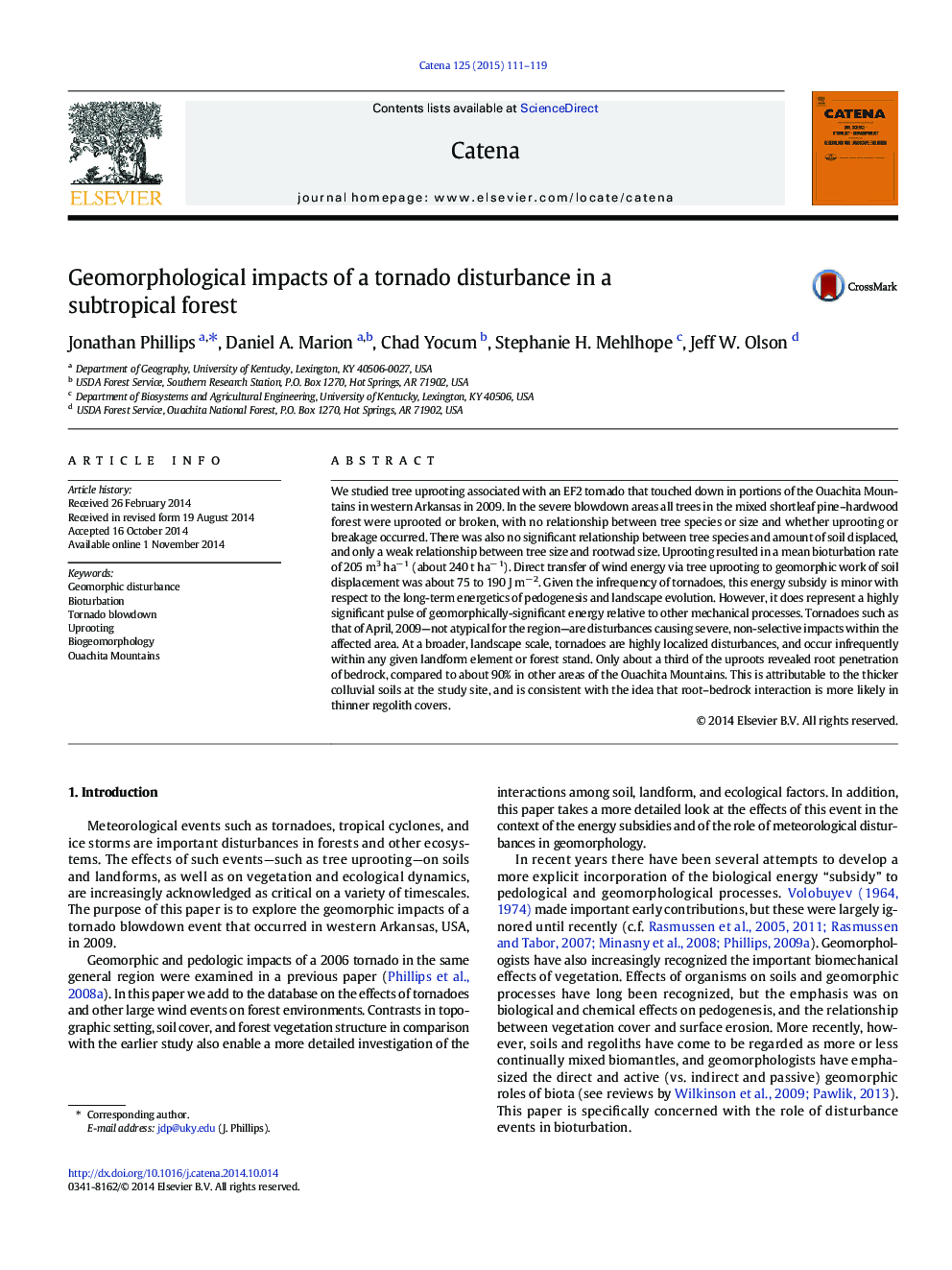| کد مقاله | کد نشریه | سال انتشار | مقاله انگلیسی | نسخه تمام متن |
|---|---|---|---|---|
| 4571283 | 1629227 | 2015 | 9 صفحه PDF | دانلود رایگان |
• Tree uprooting in a tornado resulted in a bioturbation rate of 240 t ha− 1.
• No relationship between tree species & amount of soil disturbance
• Weak relationship between tree size & amount of soil disturbance
• Direct transfer of wind energy to geomorphic work of 75–190 J m− 2
• Tornado disturbances cause severe, non-selective, localized geomorphic impacts.
We studied tree uprooting associated with an EF2 tornado that touched down in portions of the Ouachita Mountains in western Arkansas in 2009. In the severe blowdown areas all trees in the mixed shortleaf pine–hardwood forest were uprooted or broken, with no relationship between tree species or size and whether uprooting or breakage occurred. There was also no significant relationship between tree species and amount of soil displaced, and only a weak relationship between tree size and rootwad size. Uprooting resulted in a mean bioturbation rate of 205 m3 ha− 1 (about 240 t ha− 1). Direct transfer of wind energy via tree uprooting to geomorphic work of soil displacement was about 75 to 190 J m− 2. Given the infrequency of tornadoes, this energy subsidy is minor with respect to the long-term energetics of pedogenesis and landscape evolution. However, it does represent a highly significant pulse of geomorphically-significant energy relative to other mechanical processes. Tornadoes such as that of April, 2009—not atypical for the region—are disturbances causing severe, non-selective impacts within the affected area. At a broader, landscape scale, tornadoes are highly localized disturbances, and occur infrequently within any given landform element or forest stand. Only about a third of the uproots revealed root penetration of bedrock, compared to about 90% in other areas of the Ouachita Mountains. This is attributable to the thicker colluvial soils at the study site, and is consistent with the idea that root–bedrock interaction is more likely in thinner regolith covers.
Journal: CATENA - Volume 125, February 2015, Pages 111–119
